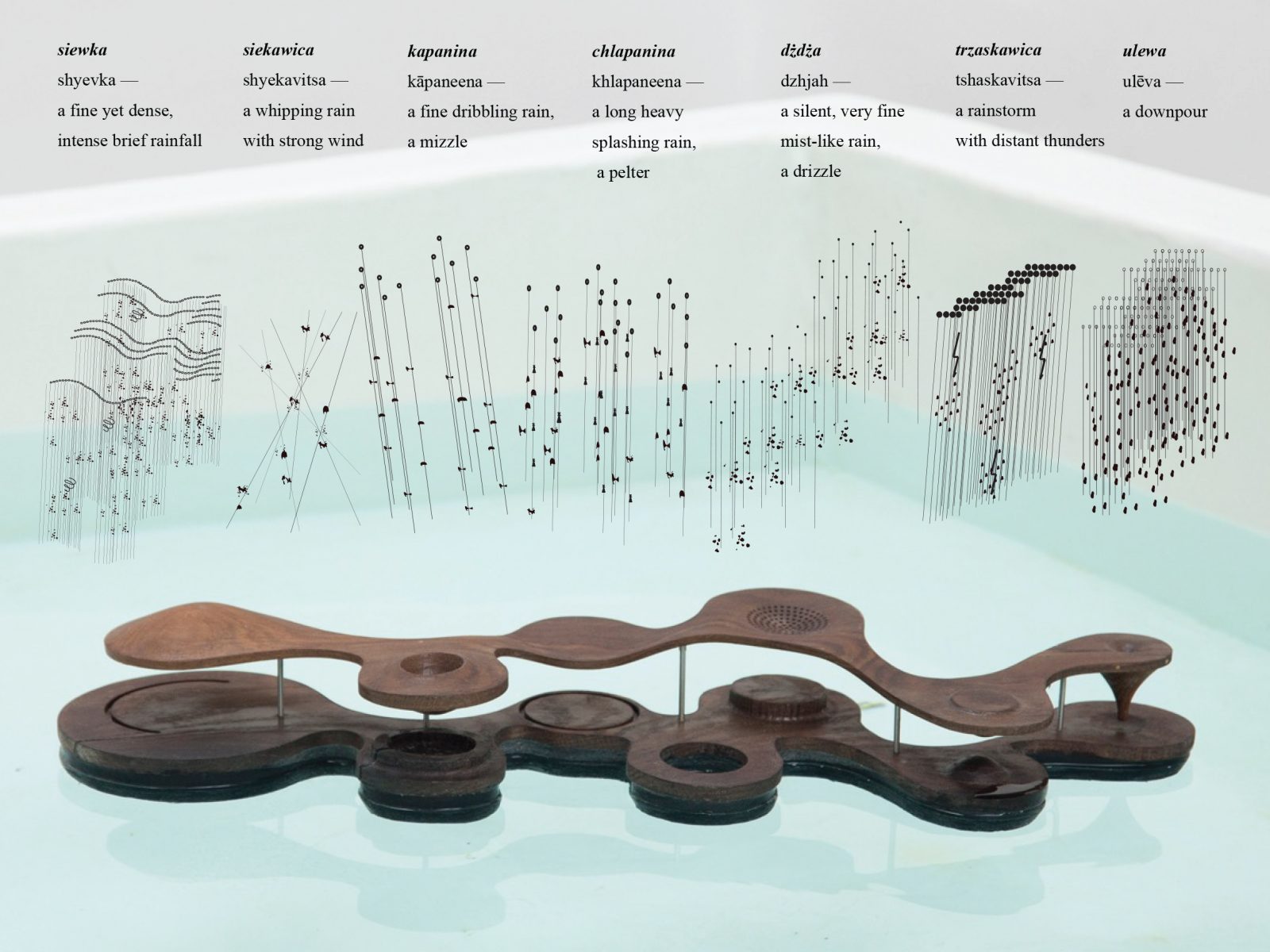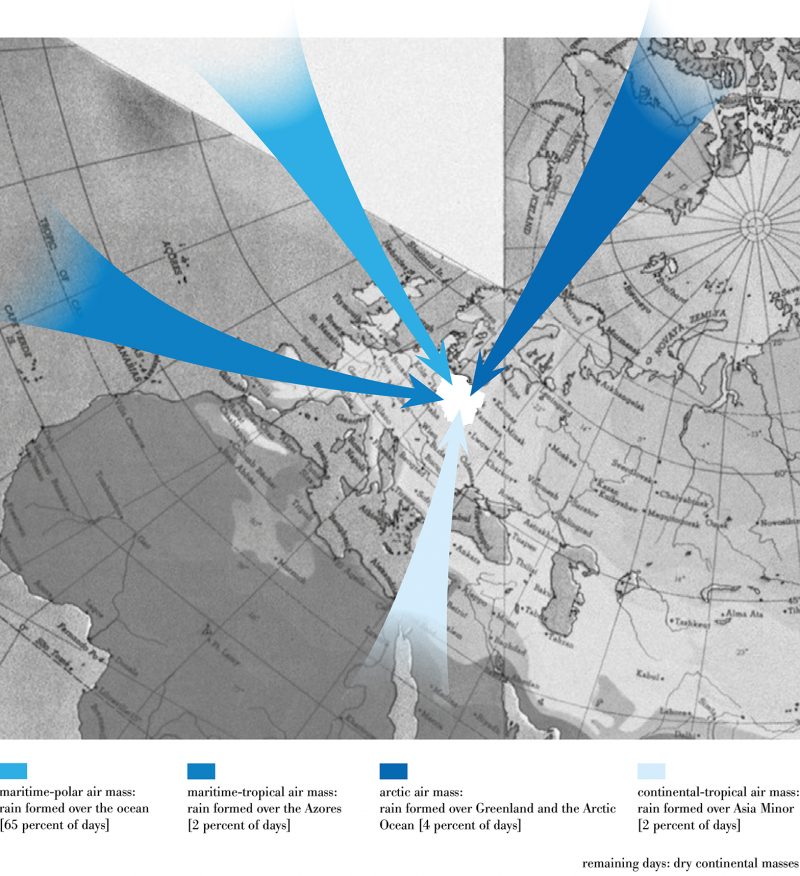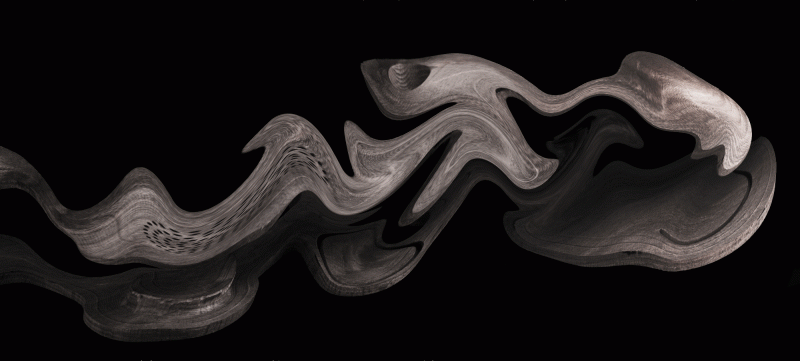
Operation of the Rain Pavilion. Illustration CENTRALA, 2018
The Rain Pavilion is a device devoted to precipitation—an atmospheric phenomenon of critical significance for the Earth’s ecosystem and the forms of assemblies it facilitates. Changing the way water circulation is perceived, connecting it multisensorially with social practices, is a postulated performative dimension of CENTRALA’s architectural intervention. The architecture of the Rain Pavilion is the amplification of the differences between seven types of rainfall characteristic for Warsaw and their names (now mostly obsolete) as identified by 1956 Władysław Kupiszewski’s ethnolinguistic study of regional weather dialect diversity.

The pavilion is created by elements reacting to rainfall in various ways. These are:
- A drum chamber in the lowest section of the roof, above the seat. Together they comprise an instrument for detecting the sounds of a trzaskawica [tshaskavitsa—a rainstorm with distant thunder].
- A funnel for collecting water from an ulewa [ulēva—a downpour] into a water column, with a wide platform separating the audience from the splash zone.
- Platform for monitoring a soundless dżdża [dzhjah—a silent, very fine mist-like rain, a drizzle], revealed through a moisture-condensing perforated trough in the roof above.
- An inverted bell for collecting water from a multidirectional siekawica [shyekavitsa—awhipping rain with strong wind], above a bench allowing the user to change their position depending on the direction of the wind.
- Flat surfaces above a reduced-thickness section of the roof to amplify the sounds of a kapanina [kāpaneena—a fine dribbling rain, a mizzle].
- An undulating roof edge to divide a siewka [shyevka—a fine yet dense, intense brief rainfall—into visible streams].
- Water-collecting depressions outside the roof contour and the platform to help monitor a chlapanina [khlapaneena—a long heavy splashing rain, a pelter] or pluchota [plookhota—a heavy splattering rainfall or sleet).

Study of precipitation in Warsaw. Compiled by CENTRALA, collage Krzysztof Pyda, 2018
Images of the model from the Amplifying Nature exhibition in Polish Pavilion, 2018.

ill. Hania Podładowska, 2018

Further reading
More about the Rain Pavilion and the Amplifying Nature project can be found in the publication accompanying the exhibition in the Polish Pavilion.
Deszcz [Rain] from the Amplifying Nature, series of curated podcasts by CENTRALA for Architektura&Biznes, online 2020 (in Polish only)
[PL]
KAPANINA — pokrapiający drobny deszczyk, kroplisty, słychać osobne krople;
SIEKAWICA — chlastający deszcz przy dużym wietrze;
ULEWA — jednostajnie szumiący obfity deszcz;
TRZASKAWICA — nawałnica piorunowa;
DŻDŻA — bezgłośny, drobniutki rozpylony deszczyk;
SIEWKA — siąpiąca rzęsistymi krótkotrwałymi falami;
CHLAPANINA — pluszczący deszcz, rozchlapujący mokre powierzchnie;